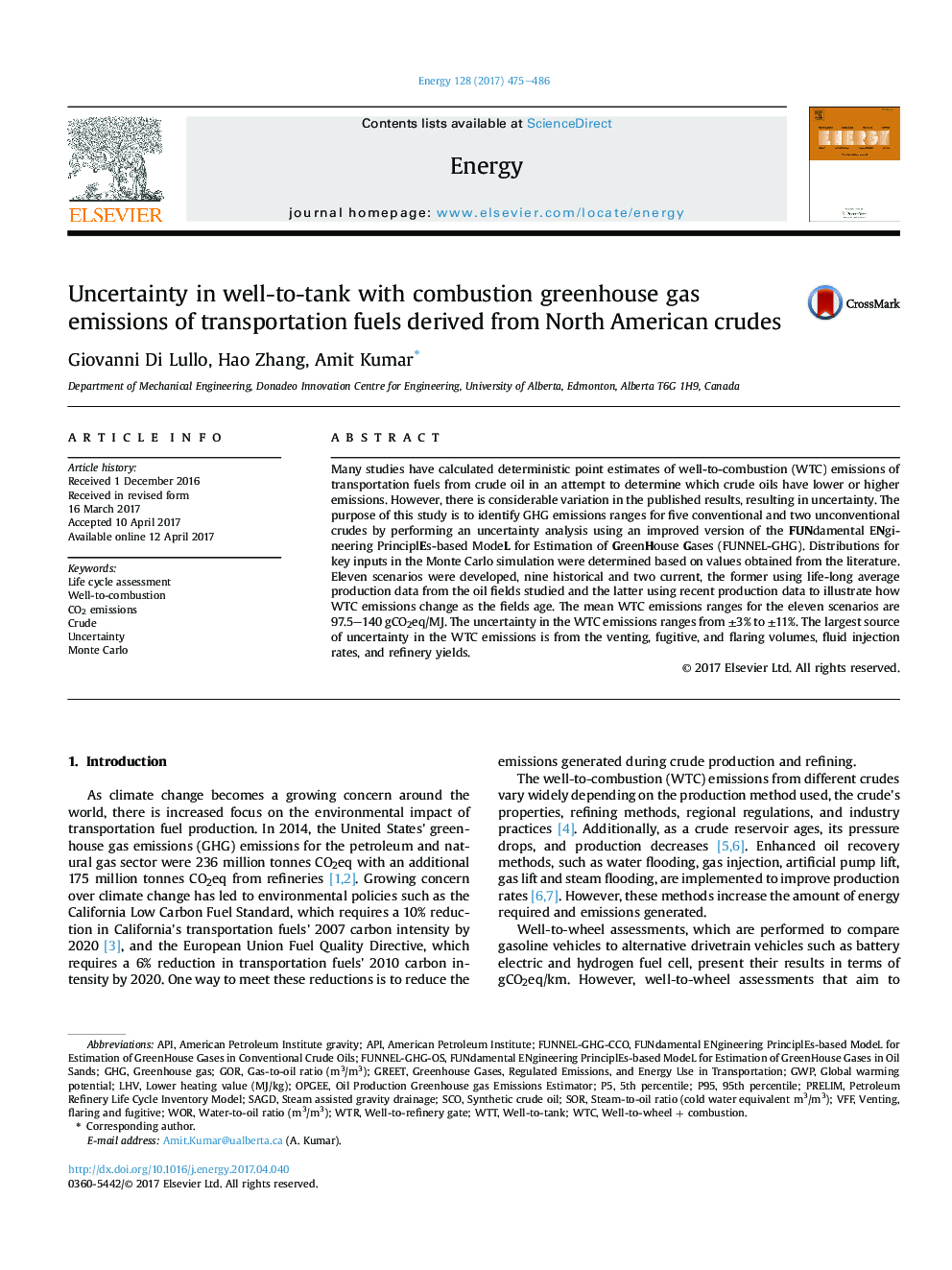| Article ID | Journal | Published Year | Pages | File Type |
|---|---|---|---|---|
| 5476043 | Energy | 2017 | 12 Pages |
â¢The well-to-combustion emissions were determined for eleven scenarios.â¢A Monte Carlo simulation was used to quantify the WTC emission uncertainty ranges.â¢WTC emissions range from 97.5 to 140 gCO2eq/MJ for the eleven scenarios.â¢The Alaska North Slope emissions increased by 34% as the field aged.â¢The largest source of uncertainty is the venting, fugitive, and flaring volumes.
Many studies have calculated deterministic point estimates of well-to-combustion (WTC) emissions of transportation fuels from crude oil in an attempt to determine which crude oils have lower or higher emissions. However, there is considerable variation in the published results, resulting in uncertainty. The purpose of this study is to identify GHG emissions ranges for five conventional and two unconventional crudes by performing an uncertainty analysis using an improved version of the FUNdamental ENgineering PrinciplEs-based ModeL for Estimation of GreenHouse Gases (FUNNEL-GHG). Distributions for key inputs in the Monte Carlo simulation were determined based on values obtained from the literature. Eleven scenarios were developed, nine historical and two current, the former using life-long average production data from the oil fields studied and the latter using recent production data to illustrate how WTC emissions change as the fields age. The mean WTC emissions ranges for the eleven scenarios are 97.5-140 gCO2eq/MJ. The uncertainty in the WTC emissions ranges from ±3% to ±11%. The largest source of uncertainty in the WTC emissions is from the venting, fugitive, and flaring volumes, fluid injection rates, and refinery yields.
